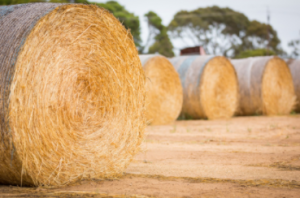Hay bales can be messy. They are composed chiefly of straw, with a few bales made up of alfalfa or alpaca fibre. When you’re ready to use your baling twine, all you have to do is remove the most minor and longest strand of hay, which usually holds the most weight. Then, attach the bale using the secure bunting tape provided with the baling twine. Baling twines have a large clip on the bottom that allows you to tie multiple strands of bales together with several inches of separation between them. To secure each bale to the centre of the bale, tie the bale between two of your finger’s.
If you’ve ever seen a baling twine in action, you know that this little tool can be an inexpensive but highly effective way to secure your weight savings in your storage shed. You can buy baling twine online or at your local hardware store. In addition to that, they are pretty convenient and come in a variety of sizes and styles. The key benefits of baling twine are it is inexpensive, very portable, reusable, and versatile. This article will discuss the benefits of baling twine for hay:
 Square Bales are similar to biobals in that they are typically manufactured from alfalfa fibres, and they serve the same purpose. However, square bales are much easier to handle when filled with wet straw, and this can easily make them very convenient and easy to work with. In addition, square bales are typically secured with bunting tape, which is one of the main benefits of using the baling twine, as it makes securing the square bales much easier.
Square Bales are similar to biobals in that they are typically manufactured from alfalfa fibres, and they serve the same purpose. However, square bales are much easier to handle when filled with wet straw, and this can easily make them very convenient and easy to work with. In addition, square bales are typically secured with bunting tape, which is one of the main benefits of using the baling twine, as it makes securing the square bales much easier.
Similar to square bales, round balers are also secured with secure bunting. However, the round baler twill is not recommended for fire retardant foam since round balers are known to produce more resistance to flame. As with baling twine, it is easy to secure a round baler to the centre of a bale using the secure bunting tape.
A plastic sweat scraper is an inexpensive but versatile tool for securing bales. Because they are made from either heavy-duty plastic or lightweight but strong vinyl material, they can cover any size and shape of the bale. Because they come in various sizes and shapes, they help secure bales in areas such as alfalfa fields or close to machinery. Since most plastic sweat scraper products come in large flat sheets, they cover large areas quickly and easily. They are also easy to use, which make them popular among people who don’t have a lot of time on their hands.
Although they aren’t a bale, a hay bale can help secure a square bale to the sides of other larger pieces. Since they are square, however, you will need a sizeable baling twine and a strong rope or chain to tie the two together. Although they look like they would be difficult to wrap around, a little practice can go a long way. Start by wrapping the rope or chain around a single bale, then tie a second piece of rope or chain around the second bale. Keep repeating the process until all three bales are covered.
In addition to being used for securing bales, the hay bale can also be used to make a pillow. To make the pillow, take an end of the bale and twist it to form a circle. Then, stuff the inside with felt, yarn, wool or any filler. It’s important to remember to fill the pillow with something soft because you will be stretching it. Since bales can be hard to work with, most people recommend using a combination of hay and filler.